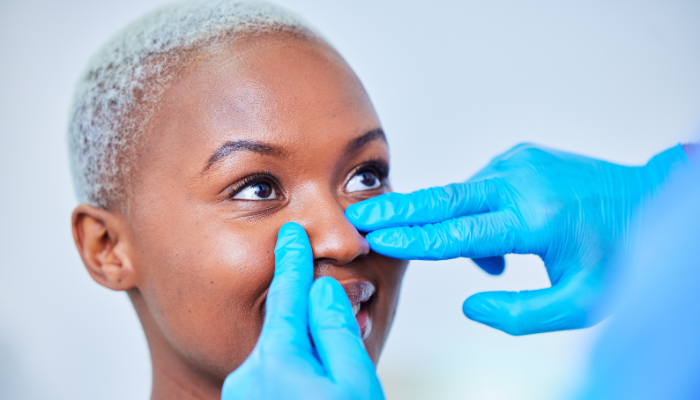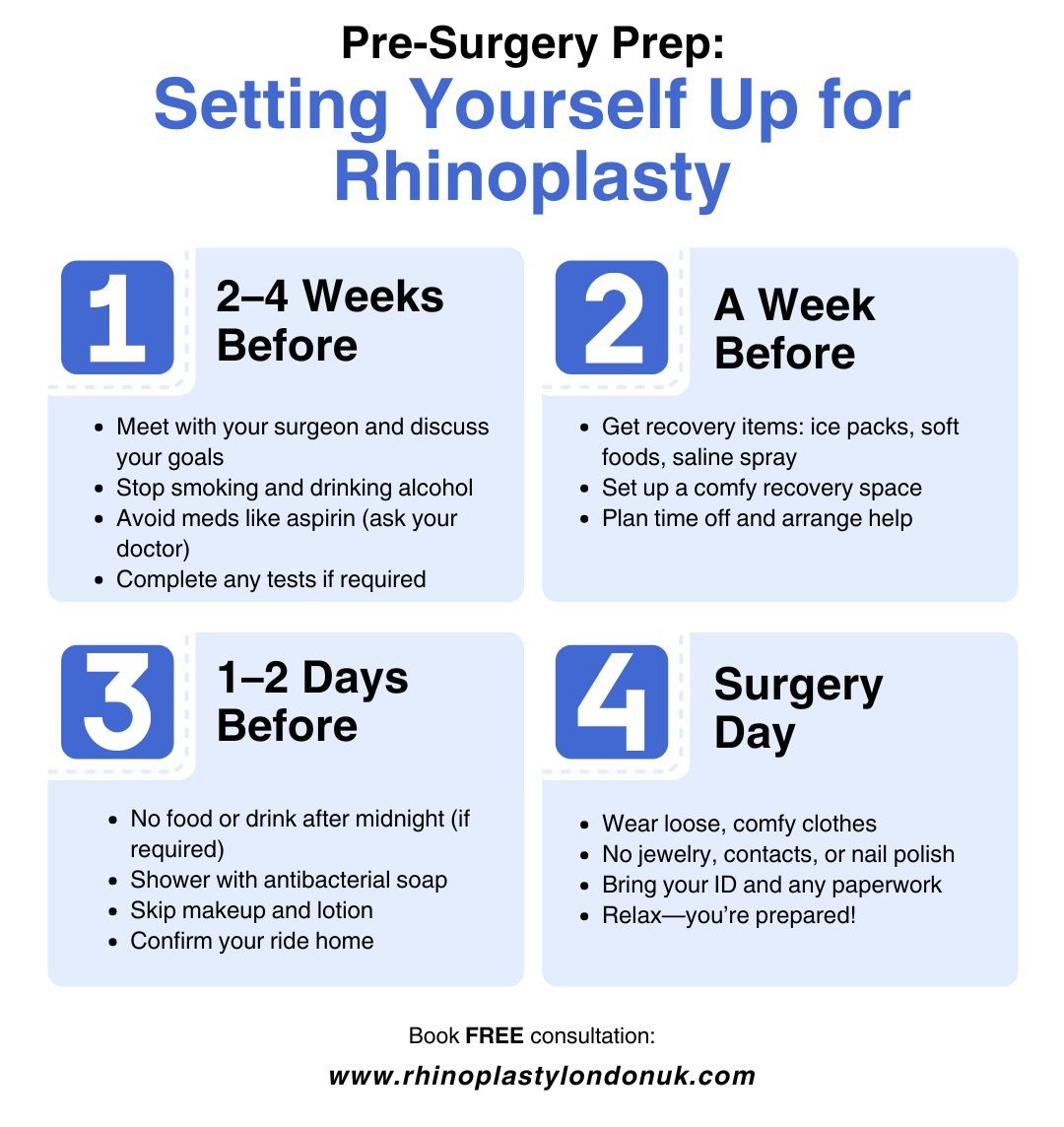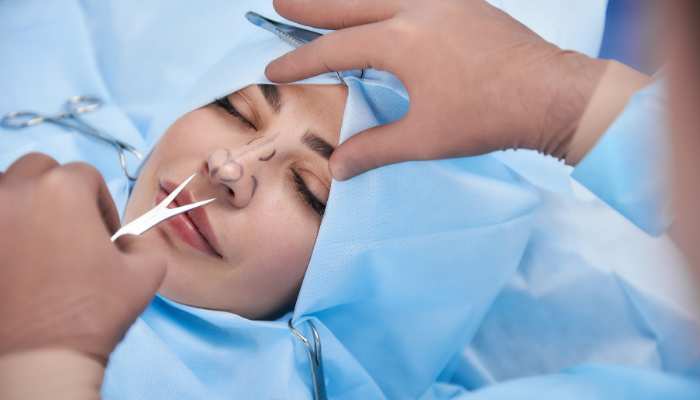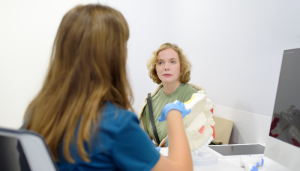Your nose might be small, but it plays a big role in how you feel about your face—and even how you breathe. It’s one of the first things people notice, and when something feels “off,” it can affect your confidence in ways you didn’t expect.
Maybe you’ve been thinking about making a change for years, or perhaps the idea just recently crossed your mind. Either way, rhinoplasty can be a surprisingly empowering step toward feeling more like yourself. In this guide, we’ll walk through what the procedure really involves, the benefits you might not have considered, and the basics to know before making any decisions—no fluff, just honest insight.
Key Takeaways
- Rhinoplasty can improve the appearance and function of the nose.
- There are different types of rhinoplasty, including open and closed techniques.
- Preparation for surgery includes consultations and setting realistic expectations.
- Recovery varies, but most people return to normal activities within a few weeks.
- Choosing a qualified surgeon is crucial for achieving desired results.
Understanding Rhinoplasty Surgery

Rhinoplasty, often called a nose job, is a surgical procedure designed to reshape the nose. It’s more common than you might think, and people consider it for all sorts of reasons.
Maybe they want to change the appearance of their nose, or perhaps they need to improve their breathing. Sometimes, it’s a bit of both! It’s a very individual thing, and what works for one person won’t necessarily work for another. So, let’s get into the basics.
Definition and Purpose
Simply put, it’s surgery to reshape the nose. The goal might be cosmetic – to alter the size, shape, or overall proportions of the nose to better fit the face. Or, it could be functional, aiming to correct structural issues that cause breathing problems.
Sometimes, it’s about fixing problems caused by an injury or a birth defect. Whatever the reason, the aim is to improve either the look or the function (or both!) of your nose.
Types of Rhinoplasty
There are several different approaches to rhinoplasty, and the best one for you will depend on your specific needs and goals.
Here are a few common types:
- Open Rhinoplasty: This involves a small incision on the columella (the bit between your nostrils) to allow the surgeon greater access to the underlying structures.
- Closed Rhinoplasty: All incisions are made inside the nostrils, meaning there’s no external scarring.
- Tip Plasty: This focuses specifically on reshaping the tip of the nose.
- Septoplasty: While not strictly rhinoplasty, this procedure straightens the nasal septum (the wall between your nostrils) to improve breathing and is often done at the same time as rhinoplasty.
Common Reasons for Surgery
People choose to undergo rhinoplasty for a variety of reasons. It’s a very personal decision, and there’s no right or wrong answer. Here are some of the most common motivations:
- Aesthetic Concerns: This could include wanting to reduce the size of the nose, reshape the bridge, refine the tip, or correct asymmetry.
- Breathing Difficulties: A deviated septum or other structural issues can make it hard to breathe through the nose. Rhinoplasty can help to correct these problems.
- Injury or Trauma: A broken nose or other injury can cause both cosmetic and functional problems that rhinoplasty can address.
- Birth Defects: Some people are born with nasal deformities that they wish to correct.
It’s important to remember that rhinoplasty is a complex procedure, and it’s essential to have realistic expectations. While surgery can make significant improvements, it’s not about achieving perfection. It’s about enhancing your natural features and improving your overall quality of life.
Benefits of Rhinoplasty Surgery
Rhinoplast isn’t just about looks; it can change your life in several ways. It’s about feeling more confident and sometimes even breathing easier. Let’s have a look at the main benefits.
Aesthetic Improvements
Okay, let’s be honest, a big reason people consider rhinoplasty is to improve the appearance of their nose. Maybe it’s always been too big, crooked, or just doesn’t quite fit with the rest of your face.
Rhinoplasty can reshape your nose to bring it into better proportion with your other features. Even small adjustments can make a huge difference in your overall look. It’s about achieving a balance that makes you feel more comfortable and confident in your own skin.
Functional Enhancements
It’s not all about aesthetics, you know. Rhinoplasty can also fix structural problems inside your nose that cause breathing difficulties. A deviated septum, for example, can make it hard to breathe properly.
By correcting these issues during surgery, you can improve airflow and make breathing much easier. This can be a game-changer if you’ve struggled with nasal congestion or sinus problems for years. It’s pretty cool when a cosmetic procedure can also have such a positive impact on your health.
Psychological Benefits
This is something people don’t always think about, but it’s super important. If you’ve been self-conscious about your nose for a long time, rhinoplasty can do wonders for your self-esteem and confidence. When you feel good about how you look, it affects all areas of your life.
You might find you’re more outgoing, more willing to try new things, and just generally happier. It’s amazing how fixing something that’s bothered you for years can have such a positive ripple effect.
Rhinoplasty can be a really empowering experience. It’s about taking control and making a change that improves your life, both inside and out. It’s not just about vanity; it’s about feeling good in your own skin and living your life to the fullest.
Preparing for Rhinoplasty Surgery

Before you get to the actual surgery, there’s some prep work involved. It’s all about making sure you’re fully informed, physically ready, and have realistic expectations. Let’s break down what you need to do.
Consultation Process
First, you’ll have a consultation with your surgeon. This isn’t just a quick chat; it’s a proper deep dive. The surgeon will assess your nose, discuss your goals, and explain what’s achievable.
They’ll also want to know about your medical history, so be prepared to answer lots of questions. It’s a good chance to ask anything that’s on your mind, no matter how small it seems.
Medical History Review
Your medical history is super important. The surgeon needs to know about any past surgeries, current medications, and any existing health conditions. This is because certain conditions or medications can affect the surgery or recovery.
For example, if you have a bleeding disorder, rhinoplasty might not be a good idea. Honesty is key here – the more information you give, the safer the procedure will be.
Setting Realistic Expectations
Okay, this is a big one. Rhinoplasty can make a real difference, but it’s not magic. It’s important to have a clear idea of what the surgery can and can’t do. Your surgeon will probably use computer software to show you potential results, which can be really helpful.
Remember, the goal is to improve your nose, not to create a completely different one.
It’s all about balance and proportion. Sometimes, surgeons might suggest other procedures, like a chin augmentation, to improve your overall facial harmony. It’s worth considering, but ultimately, the decision is yours.
Before your surgery, there are a few things you should avoid:
- Aspirin and ibuprofen: These can increase bleeding.
- Herbal remedies and supplements: Some can interfere with anaesthesia or healing.
- Smoking and vaping: These can slow down healing and increase the risk of infection.
The Rhinoplasty Procedure
Let’s get into what actually happens during the procedure. It’s natural to feel a bit anxious, but understanding the steps can really help ease your mind. I’ll walk you through the surgical techniques, anaesthesia options, and what you can expect on the day.
Surgical Techniques
There are two main surgical approaches: open and closed rhinoplasty. In open rhinoplasty, a small incision is made on the columella (the bit between your nostrils). This gives the surgeon a better view and more access to reshape the nose.
With closed rhinoplasty, all incisions are made inside the nostrils, meaning no visible external scars. The choice depends on the complexity of the changes needed. Your surgeon will discuss which approach is best for you.
Anaesthesia Options
You’ve got a couple of choices here, and your surgeon will help you decide what’s best.
- Local anaesthesia with sedation: This is often used for less complex procedures. You’ll be numb in the nose area and given medication to make you drowsy, but you won’t be fully asleep.
- General anaesthesia: This means you’ll be completely asleep during the surgery. It’s often used for more extensive rhinoplasty procedures.
What to Expect During Surgery
Each rhinoplasty is tailored to the individual’s anatomy and desired outcome.
Once the anaesthesia has taken effect, the surgeon will reshape the bone and cartilage to achieve the desired result. This might involve removing, adding, or reshaping cartilage and bone. For small adjustments, cartilage can be taken from inside the nose or from the ear. For bigger changes, cartilage from a rib or even implants might be used.
The whole thing usually takes a couple of hours, but it depends on how much work needs doing. After the reshaping is complete, the incisions are closed, and a splint is applied to support the nose during the initial healing phase.
It’s worth remembering that swelling and local anaesthetic can distort the nose during surgery, so it’s a real skill to make those small changes. Rhinoplasty isn’t a one-size-fits-all thing; surgeons tailor each operation to the patient’s specific needs.
Recovery After Rhinoplasty Surgery
So, you’ve had your rhinoplasty. What’s next? The recovery period is crucial for achieving the best possible outcome. Let’s break down what you can expect.
Initial Recovery Phase
Right after surgery, expect to feel a bit congested. Your nose might be packed with splints and bandages, which can be a little uncomfortable. You’ll probably have some bruising and swelling around your eyes and nose – don’t panic, this is normal!
Here’s what to focus on:
- Rest is key. Keep your head elevated to minimise swelling.
- Pain management. Take any prescribed pain medication as directed.
- Follow instructions. Adhere to all post-operative instructions from your surgeon.
For the first week or so, you’ll need to take it easy. Avoid strenuous activities, and try to keep your head elevated as much as possible. It might feel like a bit of a drag, but it’s worth it in the long run.
Long-Term Healing Process
While the initial swelling and bruising will subside within a few weeks, the complete healing process can take much longer – sometimes up to a year. Be patient!
Here’s what to keep in mind:
- Subtle changes. Your nose will continue to refine its shape over time.
- Sun protection. Protect your nose from the sun to prevent discoloration.
- Follow-up appointments. Attend all scheduled appointments with your surgeon.
Managing Post-Operative Care
Looking after yourself properly after rhinoplasty is super important. Here are some tips to help you along the way:
- Diet. Eat soft foods that don’t require too much chewing.
- Hygiene. Gently clean around the nostrils as instructed by your surgeon.
- Activity. Avoid strenuous exercise and activities that could impact your nose.
| Timeframe | What to Expect |
|---|---|
| First Week | Splints and bandages in place, significant swelling and bruising. |
| 2-4 Weeks | Swelling and bruising gradually subside, return to light activities. |
| Several Months | Continued refinement of nasal shape, subtle changes may still occur. |
| Up to a Year | Final results become apparent, complete resolution of swelling. |
Potential Risks and Complications
No surgery is completely risk-free, and it’s important to have all the facts before you make a decision. Let’s break down some potential issues.
Common Complications
Like any surgery, rhinoplasty comes with some general risks. These aren’t super common, but it’s worth knowing about them:
- Bleeding: Some bleeding is normal after surgery, but excessive bleeding is a risk.
- Infection: Infections can happen after any surgical procedure. Your surgeon will give you antibiotics to help prevent this.
- Reactions to anaesthesia: It’s rare, but some people have a bad reaction to the stuff they use to put you to sleep.
Then, there are some risks that are more specific to rhinoplasty:
- Breathing problems: Sometimes, the surgery can affect your ability to breathe through your nose.
- Numbness: You might experience some numbness in and around your nose, and in rare cases, it can be permanent.
- Uneven appearance: It’s possible to end up with a nose that doesn’t look symmetrical.
- Pain, swelling, and discoloration: These are normal right after surgery, but they can sometimes last longer than expected.
- Scarring: Scars are a natural part of healing, but sometimes they can be more visible than you’d like.
- Septal perforation: This is a hole in the wall between your nostrils. It’s not common, but it can happen.
- Need for further surgery: Sometimes, you might need another operation to get the results you want.
- Changes in smell: This is rare, but rhinoplasty can sometimes affect your sense of smell.
How to Minimise Risks
So, what can you do to make sure things go smoothly? Here are a few tips:
- Choose a qualified and experienced surgeon. This is probably the most important thing you can do. Look for someone who specialises in rhinoplasty and has a good track record.
- Follow your surgeon’s instructions carefully. This includes things like taking your medication, avoiding certain activities, and keeping your nose clean.
- Be honest with your surgeon about your medical history. This will help them to identify any potential risks and take steps to avoid them.
- Don’t smoke. Smoking can slow down healing and increase your risk of complications.
- Have realistic expectations. Rhinoplasty can improve the appearance of your nose, but it’s not going to make you perfect.
When to Contact Your Surgeon
It’s important to know when to get in touch with your surgeon after your operation. Here’s when you should reach out:
- If you have a fever.
- If you experience excessive bleeding.
- If you have signs of infection, such as redness, swelling, or pus.
- If you have severe pain that isn’t controlled by medication.
- If you have any other concerns about your recovery.
Remember, open communication with your surgeon is key. Don’t hesitate to ask questions or raise any concerns you might have. They’re there to support you throughout the entire process.
Choosing the Right Surgeon for Rhinoplasty

The surgeon you pick is probably the most important decision you’ll make in this whole process. It’s not just about finding someone who can do the surgery; it’s about finding someone you trust, who understands what you want, and who has the skills to deliver. Let’s break down how to find that person.
Qualifications and Experience
First things first, you need to check their credentials. Look for a surgeon who is board-certified in plastic surgery or otolaryngology (that’s ear, nose, and throat). This means they’ve had extensive training and have met certain standards of competence.
Then, find out how much experience they have with rhinoplasty specifically. It’s one thing to be a good surgeon, but rhinoplasty is a tricky procedure, and you want someone who’s done it a lot.
Ask how many rhinoplasty surgeries they perform each year. A higher number usually means more experience. Also, see if they have a special interest or focus on rhinoplasty. Some surgeons dedicate a large part of their practise to it, which can be a good sign.
Patient Reviews and Testimonials
Alright, so they look good on paper. But what do their patients say? This is where reviews and testimonials come in handy. Check out websites like Google Reviews, Trustpilot, or RealSelf to see what other people have to say about their experiences with the surgeon.
Now, don’t just look at the star rating. Read the actual reviews. What are people praising? What are they complaining about? Look for patterns. If several people mention the surgeon’s excellent bedside manner or their attention to detail, that’s a good sign. But if you see a lot of complaints about poor communication or unsatisfactory results, that’s a red flag.
Remember that every patient is different, and not every review will be glowing. But if you see a consistent pattern of positive feedback, it’s a good indication that the surgeon is skilled and reliable.
Consultation Questions to Ask
Okay, you’ve narrowed down your list. Now it’s time to book consultations. This is your chance to meet the surgeons in person, ask questions, and get a feel for whether they’re the right fit for you. Here are some questions you should definitely ask:
- Can I see before-and-after photos of your rhinoplasty patients?
- What surgical techniques do you use?
- What are the potential risks and complications of rhinoplasty?
- How long is the recovery period?
- What are your fees, and what do they include?
Don’t be afraid to ask anything that’s on your mind. This is your face we’re talking about! You need to feel comfortable and confident in your surgeon’s abilities. Pay attention to how the surgeon answers your questions. Are they patient and informative? Do they take the time to listen to your concerns? Or do they seem rushed or dismissive? The best surgeon will be someone who makes you feel heard and understood.
Conclusion
Rhinoplasty can be a transformative procedure for those looking to enhance their appearance or improve nasal function. Whether you’re considering it for cosmetic reasons or to address breathing issues, understanding the basics is essential. It’s important to consult with a qualified surgeon who can guide you through the process and help set realistic expectations.
Remember, every individual’s journey is unique, and with the right information and support, you can make a decision that feels right for you. If you’re ready to take the next step, don’t hesitate to reach out for a consultation.
Frequently Asked Questions
What is rhinoplasty?
Rhinoplasty, often called a nose job, is a surgery that changes the shape of the nose. People get this surgery for various reasons, including to improve how their nose looks or to help with breathing problems.
How long does the recovery take?
After rhinoplasty, most people need about a week to recover before going back to work or school. However, full healing can take several months as swelling goes down.
Is rhinoplasty safe?
Like any surgery, rhinoplasty has some risks. These can include bleeding, infection, or issues with breathing. It’s important to discuss these risks with your doctor before the surgery.
Will I have scars after the surgery?
Scarring is possible with rhinoplasty, but skilled surgeons try to make incisions in places that are less noticeable. In some cases, scars can fade significantly over time.
Can rhinoplasty fix breathing problems?
Yes, rhinoplasty can help improve breathing if the nose structure is causing issues. Many people choose to have the surgery for both cosmetic and functional reasons.
How do I choose a surgeon for rhinoplasty?
When picking a surgeon, look for someone with experience and good reviews. It’s also helpful to have a consultation to discuss your goals and ask any questions you may have.





